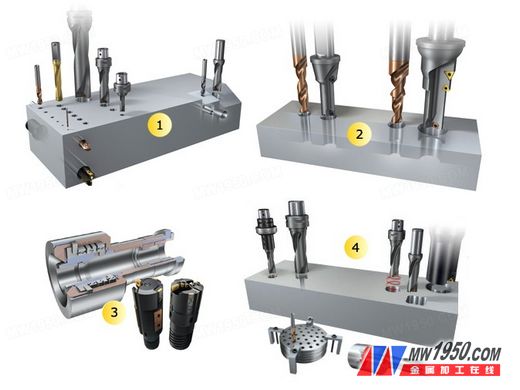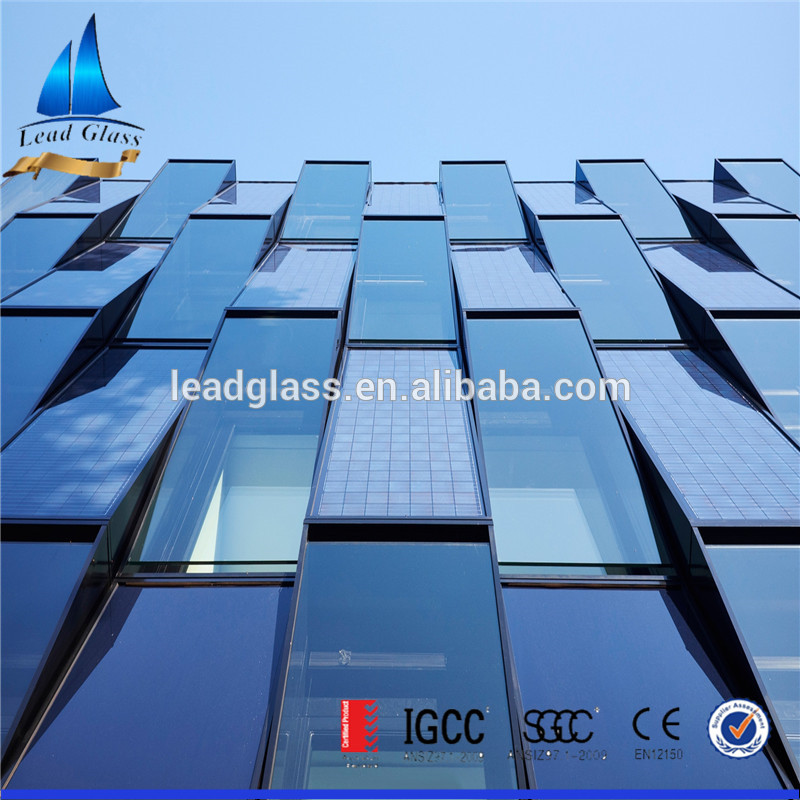We have experienced the era of high speed steel, traditional twist drills and high-tech drilling. The indexable drills that came out in 1977 opened the way for high-performance tools. To date, we have achieved three milestones in this type of drilling product. Today, our innovation is to develop another completely different high-tech drilling solution.
In the 1970s, the large-scale use of CNC machine tools caused earth-shaking changes in the processing industry. Turning centers and machining centers almost replaced all lathes and milling machines. Turning tools and milling cutters with carbide indexable inserts continue to increase machining parameters and continue to reduce machining time. However, the efficiency of drilling using twist drills has been low, and this has been going on for decades. Compared to other tools and today's drilling technology, the drilling effect of this twist drill is quite primitive, and with this drilling process, the centering edge between the two cutting edges is wider, drilling It is easy to deform the metal workpiece and consume a lot of energy.

As a leading global innovator in cutting tools, Sandvik Coromant has developed a variety of indexable tools. We have made great progress in blade geometry, carbide materials, blade manufacturing processes and new method of tool holder clamping. In 1977, Sandvik Coromant pioneered the indexable shallow hole drill, the T-max drill with a diameter of 25 mm. On the same machine, the same hole is drilled, and the T-max bit is ten times faster than the high-speed steel twist drill.
The T-max drill was a breakthrough technological innovation at the time. It has two blades, a peripheral blade and a center blade. Each blade has a different function and can be easily cut through the entire hole by alternate drilling. The cutting edge has a specially developed chipbreaker that is rilled along the cutting edge. These chipbreakers reduce the chip width, making chip removal easier. The greatest risk of indexable inserts, both now and now, is that the chips are clogged in the tank, because the drill bit will drill into the material at a very fast rate, so it is necessary to discharge the chips efficiently and quickly. Any problems with chip removal can lead to chip clogging and abrupt changes. Detecting the shape and color of the chips is especially important for the initial operation, even now. In the 1980s, the T-Max U drill made a major breakthrough and developed a 17.5 mm diameter drill bit with a new insert material and a more robust groove shape that can drill 15 holes per minute.
The second big leap in the true sense of indexable drills occurred in the 1990s. The new Coromant U drills differ from the first-generation T-max drills in design and performance. The new drills can drill 20 identical holes, twice the number of drills drilled earlier.
The Coromant U drill uses a very advanced technology. The drill body uses a spiral groove instead of a straight groove. Therefore, when the internal coolant is sprayed into the cutting area, the chip removal effect is optimal. When drilling different workpieces, the chips of different shapes can be effectively discharged. . Another major advantage of this drill is the ability to drill up to five times the tool diameter and to drill holes as small as 12.5 mm, making it a wide range of applications. In addition, we have also incorporated the newly developed Wiper technology into the design of the peripheral blades. For the same surface quality requirements, the penetration rate is higher, which greatly improves the production efficiency. The Coromant U drill has a variety of semi-standard options, so it is suitable for many different processes and drills, can be set radially to improve tolerance limits, and can be boring.
In 2005, Sandvik Coromant's leading indexable bit developed into the third phase - the CoroDrill 880 bit. Due to the steady improvement of basic technology and parts, this product is still leading today. It has a wider range of applications and is suitable for all workpiece materials, with up to 25 identical holes per minute.
Although the indexable drill bit is still basically used as a roughing tool, the hole has a tolerance class of IT13, but now it can drill a hole that is more precise than ever, which greatly expands the application area of ​​the indexable drill bit. Thanks to technological innovations, the newly developed drills are more brisk and perform better. And with the use of Step Technology, it also uses the latest chip breaking technology and advanced indexable insert technology. In addition, the newly developed tool material further optimizes the cutting parameters.
Sandvik Coromant's unique and innovative technology, Step Technology, takes a completely new approach, especially when the tool enters the workpiece, the peripheral and center blades work together, allowing for step-by-step drilling. The force is small, which plays an important and positive role in the drilling method and the final forming of the borehole. At the same time, during the drilling process, the central blade contacts the cutting area for better drilling coordination. This is a high-tech solution developed using high-tech methods, in which the tools developed not only incorporate IT technology, but also new cutting action analysis techniques. The CoroDrill 880 drill has been designed successfully over the years and we have developed a new drilling monitoring program specifically for this purpose.
However, when drilling deep holes, the indexable drill bit is limited by the cutting action. In addition, the cumulative tolerance of the tooling limits the stability of the precision hole machining tool to a certain extent. As a result, Sandvik Coromant's two innovative products, the interchangeable bit and the solid carbide bit, came into being.
As the latest addition to the interchangeable drill bit, the CoroDrill 870 drill was developed primarily to meet the tool change requirements of the machine. The drill is ideal for drilling deep holes up to eight times the tool diameter, with hole tolerances close to IT9 and bore sizes from 12 to 26 mm. Depending on the type of production, the interchangeable bit is also advantageous in terms of tool inventory and cost. The main feature of the CoroDrill 870 is the unique interface between the cutter head and the drill body. In addition, the new chip flute design and groove shape of the cutter head improves the chip breaking performance, and the newly developed insert material makes the cutting speed faster. For mature bit types, the key benefits of the latest innovations include high reliability, high penetration, high finishing performance, and ease of operation.
We have been using solid carbide drills to drill holes with tolerances up to IT8, which is still the case today. The CoroDrill 860 is an innovative solid carbide drill with a drilled diameter range of 3 to 20 mm. The 860 drill adds an important new feature, namely very fast penetration. This kind of drill bit is not only accurate, but more importantly, the speed is completely unmatched. In addition, the unique and advanced drill tip groove shape enables lighter cutting, the new chip flute design and the hard alloy material make this Drills are used in a wider range of applications.
The CoroDrill 860 is still considered to be the leader in high-precision holes with a single pass. As a high-tech drill, it can be an excellent way to increase productivity regardless of tolerance requirements. In many applications, in applications where high cutting parameters can be used, the drill's performance is superior to modern indexable drills, allowing more holes to be drilled per minute.
In the past few decades, Sandvik Coromant's innovative drilling technology has changed the development of the entire processing industry and greatly improved processing efficiency. In the mid-1970s, a typical processing shop drilled one hole per minute, but now it can drill up to 30 holes per minute, and the hole accuracy is higher, no additional surface treatment is required, and processing safety is greatly improved. Sex.
For more information on drilling applications, please visit: http://
Insulating glass units, or IGUs, are designed to keep homes warmer in the winter and cooler in the summer. consists of two or more glass window panes separated by a vacuum or gas-filled space to reduce heat transfer across a part of the building envelope. A window with insulating glass is commonly known as double glazing or a double-paned window, triple glazing or a triple-paned window, or quadruple glazing or a quadruple-paned window, depending upon how many panes of glass are used in its construction.
Insulated glass can be double insulated glass, triple insulated glass, laminated insulated glass, Low-E Insulated Glass, Vacuum Insulated Glass, insulated glass with internal blinds, Colored Insulated Glass and so on for windows, doors, exterior curtain walls, thickness, color, size can be on customer's request.




insulated glass unit,triple insulated glass,insulated glass panels,double insulated glass,low e insulated glass
Shanghai Lead Glass Co.,Ltd , https://www.leadglaze.com